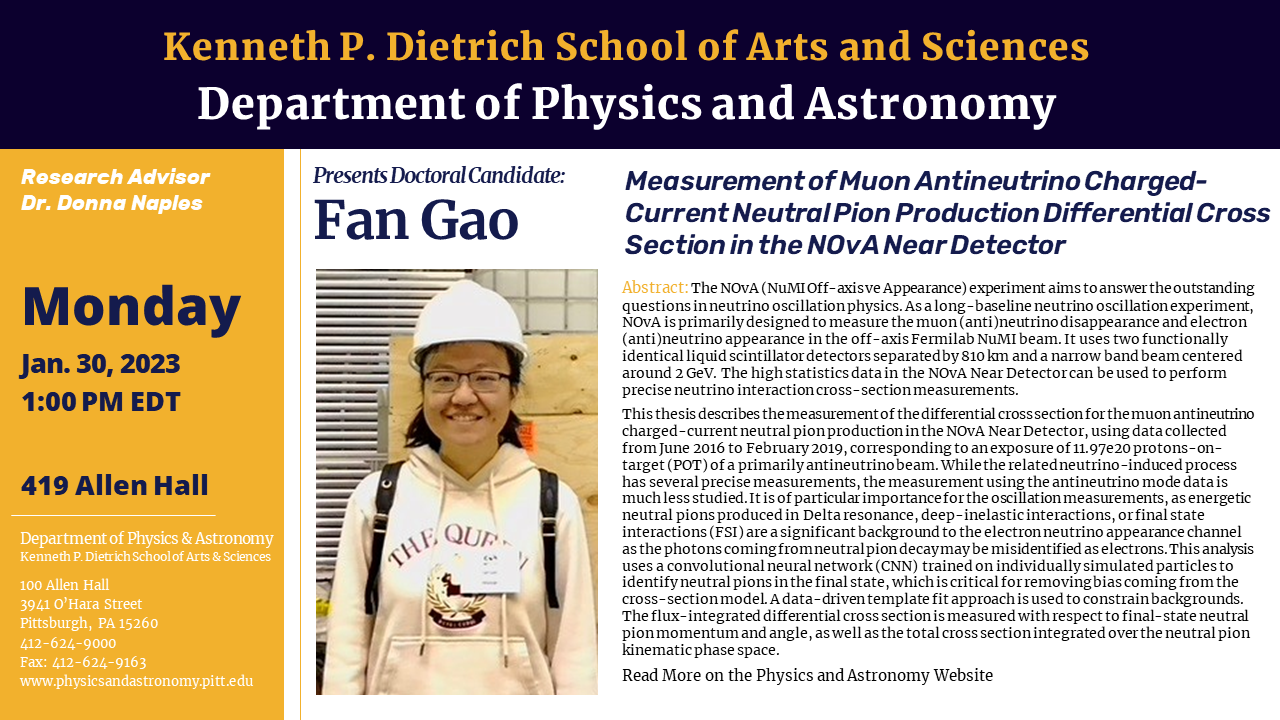PhD Defense: Fan Gao
January 30, 2023 - 1:00pm
Measurement of Muon Antineutrino Charged-Current Neutral Pion Production Differential Cross Section in the NOvA Near Detector
Abstract: The NOvA (NuMI Off-axis ve Appearance) experiment aims to answer the outstanding questions in neutrino oscillation physics. As a long-baseline neutrino oscillation experiment, NOvA is primarily designed to measure the muon (anti)neutrino disappearance and electron (anti)neutrino appearance in the off-axis Fermilab NuMI beam. It uses two functionally identical liquid scintillator detectors separated by 810 km and a narrow band beam centered around 2 GeV. The high statistics data in the NOvA Near Detector can be used to perform precise neutrino interaction cross-section measurements.
This thesis describes the measurement of the differential cross section for the muon antineutrino charged-current neutral pion production in the NOvA Near Detector, using data collected from June 2016 to February 2019, corresponding to an exposure of 11.97e20 protons-on-target (POT) of a primarily antineutrino beam. While the related neutrino-induced process has several precise measurements, the measurement using the antineutrino mode data is much less studied. It is of particular importance for the oscillation measurements, as energetic neutral pions produced in Delta resonance, deep-inelastic interactions, or final state interactions (FSI) are a significant background to the electron neutrino appearance channel as the photons coming from neutral pion decay may be misidentified as electrons. This analysis uses a convolutional neural network (CNN) trained on individually simulated particles to identify neutral pions in the final state, which is critical for removing bias coming from the cross-section model. A data-driven template fit approach is used to constrain backgrounds. The flux-integrated differential cross section is measured with respect to final-state neutral pion momentum and angle, as well as the total cross section integrated over the neutral pion kinematic phase space.
Location and Address
419 Allen Hall (No Zoom access at this time)
